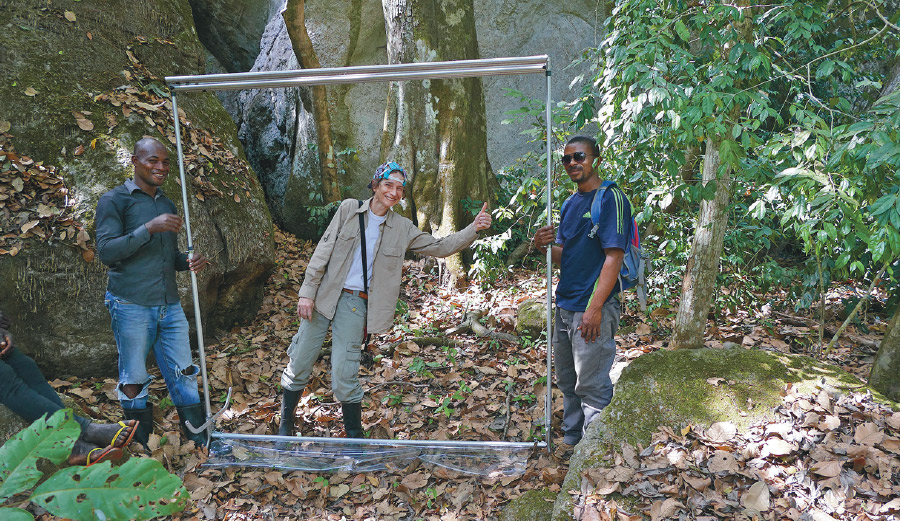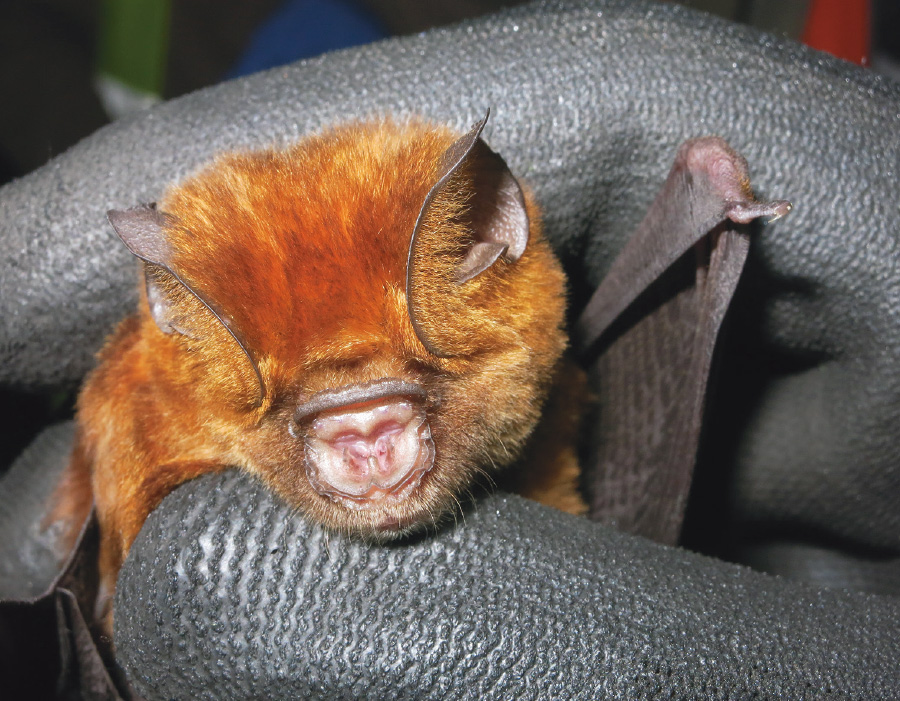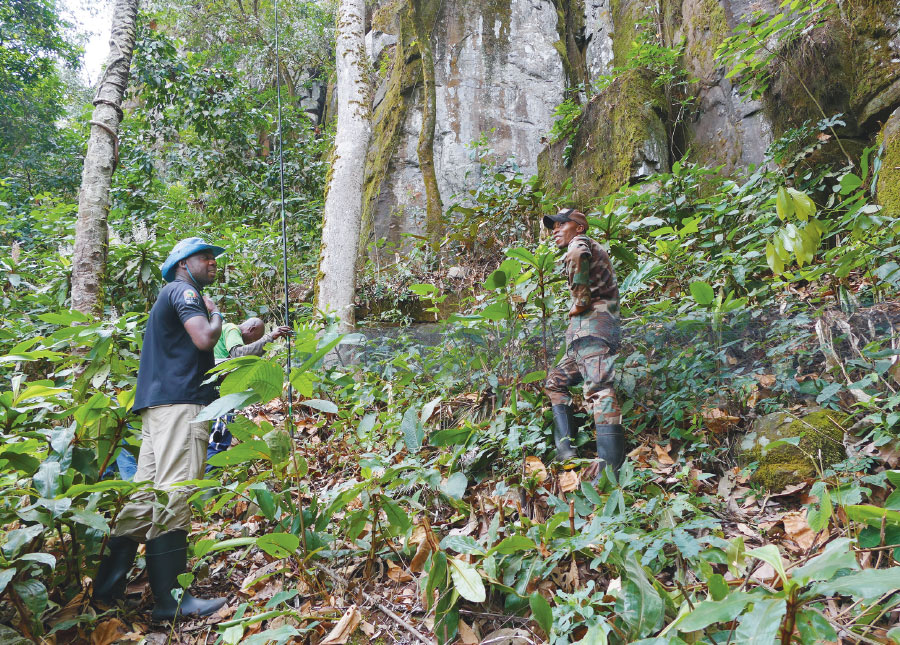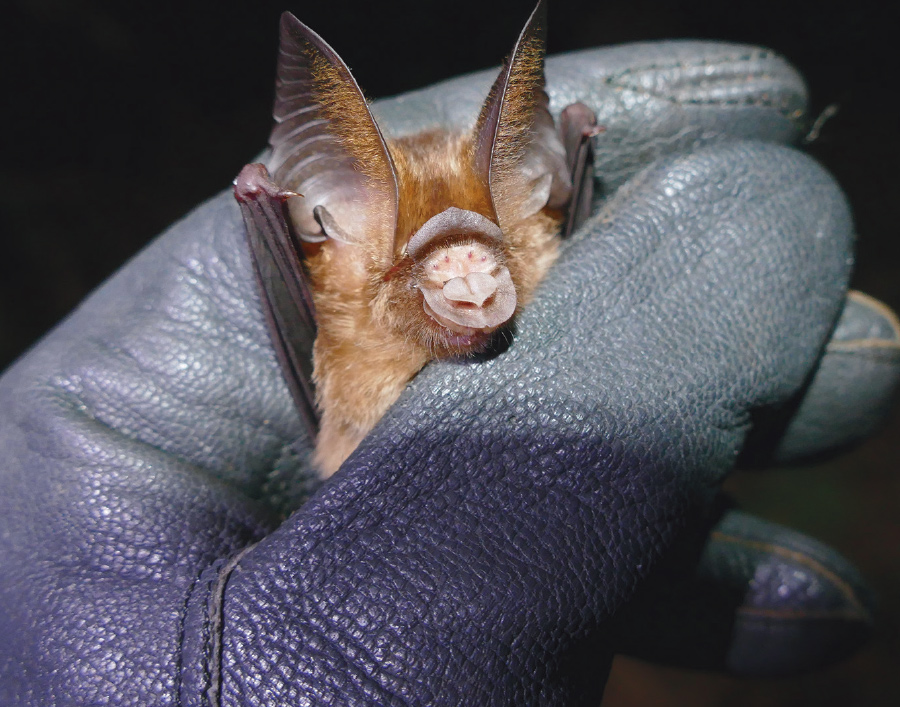Biodiversity Hot Spot: Guinea

hen Natalie Weber saw the truckload of logs scattered across the roadway in southeastern Guinea, she figured her team might be waiting a while. When she saw other stranded travelers build fires and start to cook along the side of the road, she realized they might be in for a long wait, but she took it all in stride. Weber has worked with Guinea’s bats since 2007, and she’s conducted fieldwork in many remote parts of the world, so travel delays are nothing new to her. Her latest foray into the wilds of Guinea was from late January to early March 2023 as a Bat Conservation International (BCI) Research Consultant. Based in Germany, Weber joined a collaborative field team to conduct a bat survey at four sites in the southeastern part of the country. The expedition was wildly successful, recording around 30 different bat species. To put that figure in context, the United States has approximately 50 bat species.


—Mamadou Diawara

The expedition took place over five and a half weeks, starting in Guinea’s capital, Conakry, where the team worked with nonprofit Guinée Écologie to arrange supplies and coordinate for the four weeks of fieldwork ahead. They spent a week at each of the four study sites, conducting research off the grid without electricity or running water and often no connectivity.
Once the team reached each of the four sites, they would contact local authorities and find the guides and eco guards they needed. The field team would investigate the local landscape and look for certain features likely to contain bats, such as caves and crevices. Then they would use harp traps, mist nets, and acoustic detectors to survey for bats, setting up each day before sunset. They worked late into the night, catching bats, identifying and collecting data, and recording their calls with acoustic detectors upon release. They would usually end their days between 1 a.m. and 5 a.m.
Diving into the generous biodiversity of Guinea
“Despite their importance, bats are nowadays little known,” says Mamadou Diawara, Executive Director of Guinée Écologie. “No systematic inventory has yet been carried out to know the diversity present in Guinea. Most of the studies that are carried out in the country do not take into account their presence. Also, it is important to study them to better understand: the distribution, the relationship with local populations, and the role they play in Guinean society.”
Around 10% of the country is designated as protected, but habitat destruction and fragmentation are significant threats. Guinea is called the “water tower of West Africa,” with 22 different rivers originating in the country, highlighting its importance in the region for humans and animals.

Documenting the Species
“Guinea is a really important area for bats,” says Dr. Jon Flanders, BCI Director of Endangered Species Interventions. “It’s very biodiverse, but very little has been done to document the status of bats.”
The partnership between BCI, Guinée Écologie, and others is a step towards documenting the status of bats and using those data to drive conservation solutions.
Building the framework of data
“Ziama is well protected as a biosphere reserve, but in the other areas, these are habitats on the brink,” Weber says. “You can feel what was there because you can find some spots that still have an incredible diversity of bat species, but you know it’s just a remnant of what used to be there.”
The team hopes to collect more data to help assess the habitat and develop effective conservation plans to benefit all species.
“Bats are very useful animals for habitat assessment because they are indicator species, and the species composition in a certain place can tell you about habitat conditions you find there,” Weber says. She hopes the project and data “will become part of a larger picture that will ultimately help save Guinea’s environment for the benefit of everyone.”


—Natalie Weber



“Acoustic detectors are important in the sense that they allow us to know if a species is present or not,” Dr. Atagana says. “It may equally draw our attention to species unknown to us through their sounds. Furthermore, the use of acoustic detectors might lead to long-term passive monitoring through sampling and analyzing to determine the species present in the area.”
The work continues
“The collaboration between Guinée Ecologie, BCI, and other partners could greatly contribute to the conservation of bats in Guinea,” Diawara says. “It would make it possible to strengthen national capacities for a better knowledge of bats; to increase awareness to change the perception of local communities vis-à-vis these species; to strengthen the Guinean legal framework for better protection of bats and their habitat.”